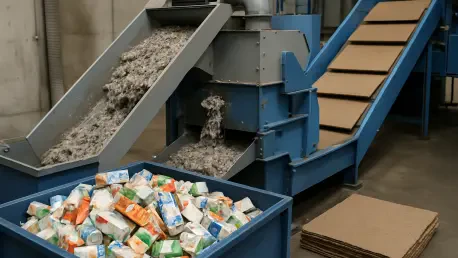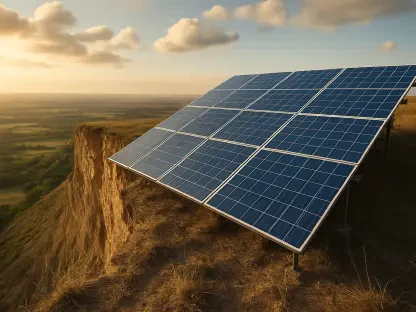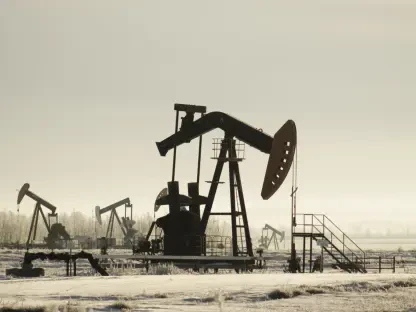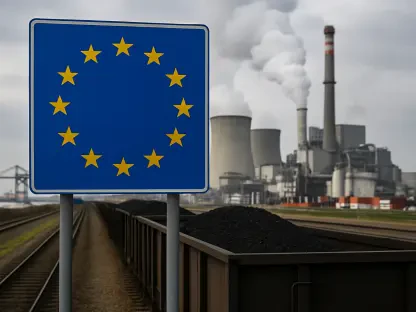I’m thrilled to sit down with Christopher Hailstone, a renowned expert in energy management and renewable energy, who has pivoted his expertise to provide valuable insights into sustainable materials management, particularly in the realm of carton recycling. With a deep understanding of circular economy principles and resource recovery, Christopher offers a unique perspective on how everyday items like food and beverage cartons are transformed into valuable new products, reducing waste and conserving resources. In our conversation, we explore the intricate journey of carton recycling, the innovative technologies driving progress, and the exciting potential for cartons to contribute to sustainable building materials and beyond.
How does the journey of a food or beverage carton unfold once it’s collected from a recycling bin?
Once a carton is picked up from the curb, it heads to a material recovery facility, or MRF, where the real work begins. At the MRF, cartons are sorted from other recyclables using a combination of manual and automated processes. They’re then baled and shipped to specialized facilities like paper mills or other recycling plants. Depending on the destination, the carton might be broken down into its core components—paper, plastic, and aluminum—or processed as a whole for different end products. It’s a fascinating supply chain that ensures these materials don’t end up in landfills but instead get a second life.
What makes the fiber in cartons stand out as particularly valuable in the recycling process?
The fiber in food and beverage cartons is exceptional because it’s long and strong, which comes from the high-quality virgin paperboard used in their production. This strength translates into a reliable raw material for creating premium paper products or packaging. Unlike some other recycled materials that might degrade over multiple cycles, carton fiber maintains a high level of integrity, making it a prized input for mills. It’s not just about quantity but the consistent quality that mills can depend on for their operations.
Can you describe how cartons are transformed into new paper products at a mill?
At a paper mill, cartons are pulped in large vats of water to break them down into a slurry. This process separates the paper fibers from the plastic and aluminum layers. The fiber is then cleaned, refined, and turned into new paper products like tissues or packaging materials. What’s impressive is that the fiber yield from cartons, while slightly lower than some other paper sources due to those additional layers, often reaches up to 60%. The quality of this recovered fiber is so high that it’s a critical component for maintaining production, especially when other materials are scarce.
Beyond paper, how are cartons finding new life in other industries like construction?
Cartons are increasingly being used to create durable building materials, such as roof cover boards for commercial projects. In this process, whole cartons are shredded into small pieces and then hot-pressed into large sheets. The heat melts the polymers within the cartons, binding everything together naturally without the need for additional chemicals or water. The resulting boards are incredibly strong and moisture-resistant, making them ideal for applications in big box stores or warehouses where sustainability and performance are both priorities.
There’s been some exciting news about new facilities dedicated to recycling cartons into building materials. Can you share more about these developments?
Absolutely, there’s a lot of momentum in this space. A new facility in California, for instance, is set to open before the end of 2025. Its goal is to process post-consumer cartons into construction boards, handling around 750 tons of carton material each month. This kind of capacity not only boosts regional recycling efforts but also reduces reliance on virgin materials in construction. It’s a game-changer for creating a more sustainable building industry and keeping valuable resources in circulation.
Many people still believe cartons can’t be recycled due to their mixed materials. How would you address this misconception?
It’s a common misunderstanding that the combination of paper, plastic, and aluminum in cartons makes them unrecyclable, but that’s simply not the case anymore. Technology has advanced significantly, and today’s recycling processes can efficiently separate these layers. The paper fiber is pulped for new products, while the plastic and aluminum can be recovered for other uses. What was once a challenge is now an opportunity, and cartons are increasingly seen as a resource rather than a problem in the recycling stream.
How has access to carton recycling evolved for households across the U.S. in recent years?
Access to carton recycling has seen remarkable growth over the past decade, with a nearly 240% increase in availability. Today, over 77 million American households have access to curbside collection programs for cartons. This expansion is driven by growing demand for recovered materials in end markets like paper mills and building product manufacturers, as well as support from industry initiatives that provide resources and grants to local programs. It’s a clear sign that the infrastructure and interest in carton recycling are stronger than ever.
Looking ahead, what’s your forecast for the future of carton recycling and its role in the circular economy?
I’m very optimistic about the future of carton recycling. As collection programs continue to expand and new end markets emerge, particularly in building materials, cartons will play an even bigger role in the circular economy. We’re likely to see more innovative uses for recovered materials and further advancements in separation technologies, making the process even more efficient. With growing awareness and industry support, I believe carton recycling will become a cornerstone of sustainable materials management, helping us reduce waste and conserve resources on a much larger scale.









